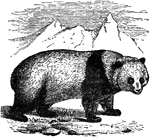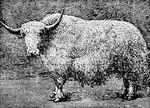Clipart tagged: ‘tibet’

The Potala, Lhasa
"The Dalai Lama, the supreme head of Tibetan Buddhists, occupies an enormous palace on the Potala hill…

Giant Panda
Ailuropus Melanoleucus. "A. melanoleucus, discovered by Pere David in 1869, in the most inaccessible…

Tibet Coin
"Coin struck in Tibet, from specimen in India Library; inscribed "27th year (of cycle=1772 A.D.) from…

Tibet Coin
"Tibeto-Chinese coinage ("Kieniang, 58th year," i.e. 1793 A.D.)" —The Encyclopedia Britannica,…

Yak
"Yak is a species of ox from the mountainous regions of Tibet. There are two races: the wild yak, generally…